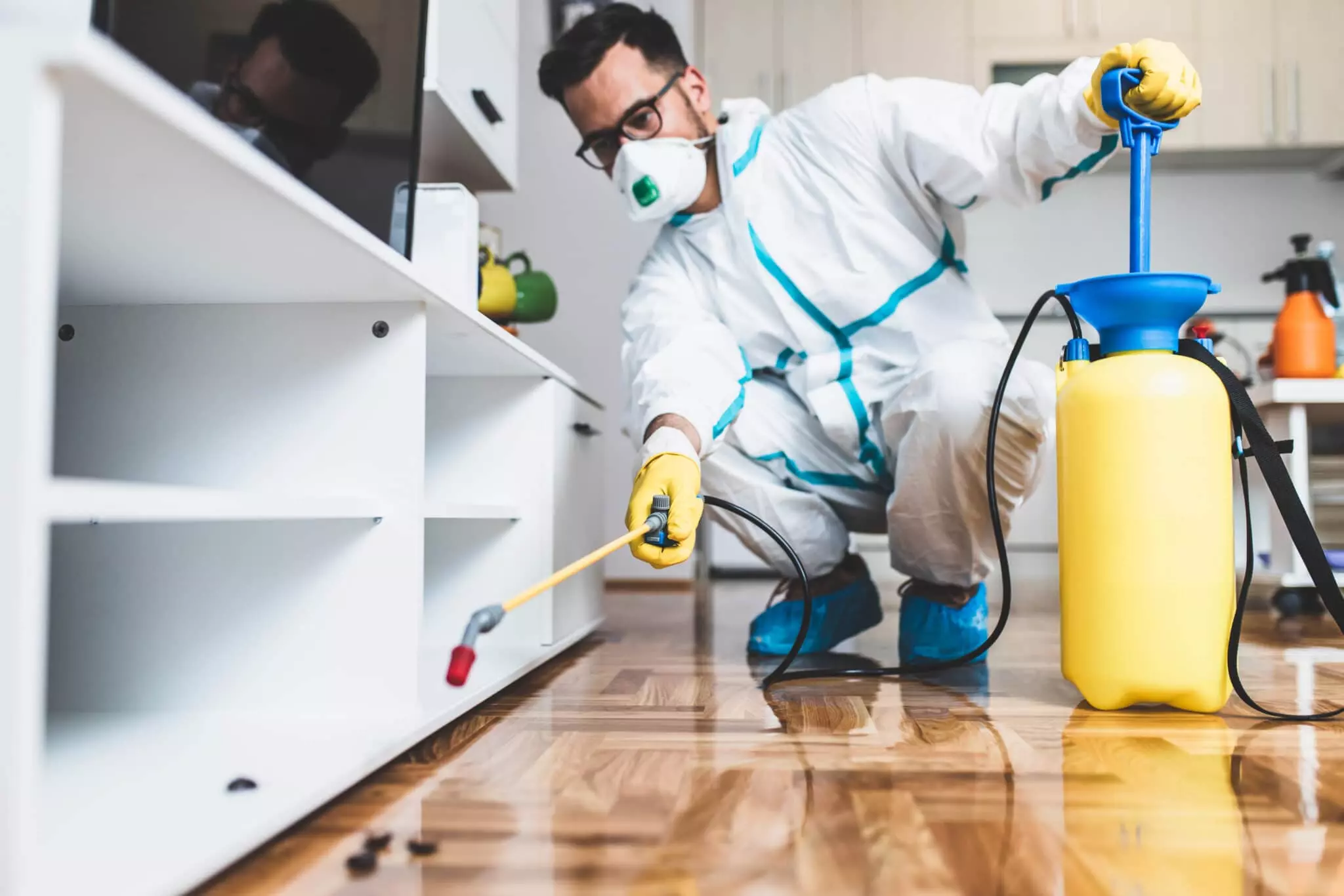A1 Charlotte Pest Control Companies - Your Local Pest Experts
A1 Charlotte Pest Control Companies - Your Local Pest Experts
Blog Article
Bed Pest Treatment Breakdown: Comparing Chemical Vs. Non-Chemical Solutions
In the world of pest control, especially when managing the consistent issue of bed insects, the selection in between chemical and non-chemical treatment options can be a pivotal one. Both methods supply distinctive advantages and downsides, influencing elements such as efficiency, safety considerations, and general cost. By checking out the nuanced details of each method, a clearer understanding of which course to go after in addressing a bed insect invasion can be acquired.
Performance of Chemical Treatments
Chemical therapies for bed bug infestations have been widely recognized for their fast and powerful efficiency in removing these parasites. When thinking about the efficiency of chemical treatments, it is essential to comprehend that they can supply a fast and detailed option to a bed insect issue. Professional pest control experts often rely on pesticides to target bed pests at various stages of their life cycle, consisting of nymphs, adults, and eggs. These chemicals normally work by interrupting the bed bugs' nervous system, bring about paralysis and ultimate death.
Furthermore, chemical therapies have the advantage of using recurring impacts, meaning that they can continue to remove bed insects also after the first application. This recurring action is particularly advantageous in combating any potential re-infestations. Additionally, the quick action of chemical therapies can bring relief to individuals encountering serious bed insect infestations, permitting them to restore control of their space promptly.
Safety And Security Interest In Chemical Solutions
When using chemical options for bed bug therapy is ensuring the security of passengers and the atmosphere,One critical facet that calls for mindful factor to consider. While chemical therapies can be reliable in getting rid of bed bugs, they may position risks otherwise handled correctly. Among the main security interest in chemical options is the possible damage they can trigger to human health and wellness. Direct exposure to particular chemicals made use of in bed bug treatments can cause respiratory problems, skin irritability, or various other adverse responses, specifically in people with pre-existing conditions or level of sensitivities. Furthermore, inappropriate application or dosage of chemical pesticides can cause poisonous deposits sticking around in the cured area, posing long-lasting health and wellness dangers to owners.
Moreover, the ecological impact of chemical options is another considerable consideration. Some chemicals used in bed insect therapies may be unsafe to valuable bugs, wildlife, and ecosystems if they leach right into the dirt or water supply. It is necessary to make use of chemical treatments carefully, adhering to safety standards, and considering much less toxic options to mitigate these dangers and ensure the efficient and secure administration of bed insect problems.
Benefits of Non-Chemical Methods
Taking into consideration the prospective security problems and environmental effect connected with chemical services for bed insect treatment, exploring non-chemical approaches presents an appealing alternative with a number of distinct advantages. Non-chemical approaches supply a much safer choice for households, specifically those with people, family pets, or kids sensitive to harsh chemicals. These methods eliminate the risks of direct exposure to poisonous compounds, minimizing the capacity for negative health and wellness impacts. Moreover, non-chemical treatments are eco-friendly, as they do not add to air or water pollution, making them a sustainable selection for pest control.
Additionally, non-chemical options can be reliable in targeting bed bugs, including hard-to-reach areas where chemical treatments might not pass through - A1 charlotte bed bug exterminator. Approaches such as heat treatment, vacuuming, steam cleaning, and mattress encasements offer complete eradication without the use of hazardous chemicals.
Limitations of Non-Chemical Treatments

Furthermore, non-chemical therapies often require numerous applications to attain successful obliteration. This can be lengthy and may not always guarantee full removal of all bed bugs and their eggs, specifically in hard-to-reach or surprise locations.
In addition, the success of non-chemical therapies heavily depends on proper implementation and thoroughness, which can be testing for individuals without professional proficiency. Poor application of non-chemical approaches may cause insufficient obliteration, resulting in relentless infestations and the need for extra treatments.
For that reason, while non-chemical therapies have their benefits, it is necessary to acknowledge these restrictions and consider them when identifying one of the most reliable strategy for managing bed bug infestations.
Expense Contrast: Chemical Vs. Non-Chemical Options
Offered the restrictions linked with non-chemical treatments, an important element to review in the context of bed pest administration is the cost bed bug pesticide comparison between chemical and non-chemical alternatives. In contrast, non-chemical therapies like heat therapy or steam can be a lot more expensive, with expenses varying from $1,000 to $6,000 for an entire home. While the first cost of chemical treatments may seem reduced, several treatments might be needed to fully eradicate the problem, possibly raising the overall cost.
Final Thought

Taking into consideration the prospective safety and security issues and ecological impact connected with chemical solutions for bed insect treatment, discovering non-chemical approaches presents a promising option with a number of distinctive benefits.Provided the constraints associated with non-chemical treatments, a crucial aspect to examine in the context of bed pest monitoring is the price comparison between chemical and non-chemical alternatives. In contrast, non-chemical treatments like heat treatment or steam can be a lot more pricey, with prices varying from $1,000 to $6,000 for a whole home. While the first cost of chemical treatments may seem lower, numerous treatments might be required to completely eradicate the invasion, possibly increasing the general cost.In final useful link thought, when contrasting chemical and non-chemical bed bug treatment choices, it is essential to think about performance, safety and security, benefits, restrictions, and expense.
Report this page